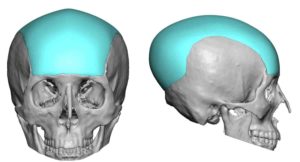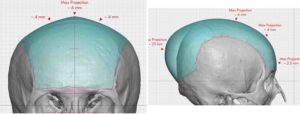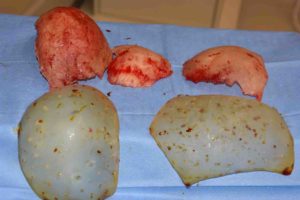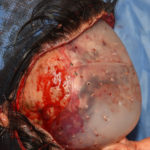Background: Many areas of the face and the body can be augmented for aesthetic purposes. While the skull is not usually perceived as also be able to be enlarged, it can be done as well. The tightness of the overlying scalp is more restrictive than other body areas so there are limits as to how much skull augmentation can be done.
The implant materials used for aesthetic or onlay skull augmentation are either bone cements or custom made implants. Each can be effective but in larger surface area augmentations a custom implant becomes more effective with far less risk of contour irregularities or edge transition issues. The use of a custom skull implant becomes particularly advantageous when it become necessary to replace a medically or aesthetically compromised large bone cement cranioplasty.

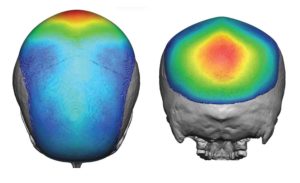

When adequate scalp space exists from a prior implant, a large custom skull implant can be accommodated. This is relevant when the need to replace an existing onlay cranioplasty exists and a full coronal incision is present. This permits a lot of scalp mobility although pericranial releases may be needed due to the development of an implant capsular scar.
Highlights:
1) Large skull augmentations cover the forehead in front and go back to the occipital area on the back of the head.
2) The use of bone cements as a cranioplasty method over a large skull surface area is prone to irregularities and a non-smooth contour.
3) A custom skull implant is the best way to cover large skull areas and be a superior replacement for a prior alloplastic augmentation cranioplasty.
Dr. Barry Eppley
Indianapolis, Indiana



